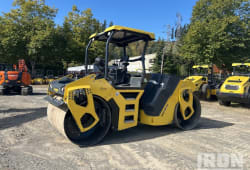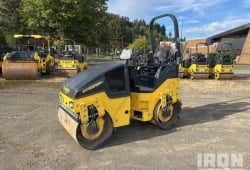Balloon Frame Construction Explained
4 Lectura mínima
)
mayo 29, 2024
Balloon framing is characterized by its framework of long, vertical studs that run the full height of the building from the sill plate on the foundation to the top plate at the roof. This method replaced the earlier, more labor-intensive timber framing and significantly simplified the construction process. Horizontal elements, known as joists, are then nailed into the studs to create each floor level.
Key Components of Balloon Frame
Vertical Studs
Vertical studs are crucial in balloon frame construction, acting as the main structural element of the building's framework. These studs, which are usually made from softwood for its workability and cost-effectiveness, run continuously from the foundation sill to the roof. They not only support the walls but also distribute the vertical loads throughout the structure, providing a skeleton to which other components are attached.
Sill Plates
Sill plates form the critical interface between a structure's foundation and its vertical components. These horizontal elements are anchored to the foundation, usually with bolts, and they support the vertical studs that are attached above them. Sill plates distribute the load from the studs to the foundation evenly, helping to stabilize the building and prevent settling or shifting of the wooden frame.
Top Plates
Top plates are the horizontal components that sit at the top of the wall studs, effectively capping and securing the upper ends of the vertical studs. They play a pivotal role in transferring the loads received from the roof structures, such as rafters and trusses, down through the studs to the foundation. Additionally, top plates provide a surface for securing the roof sheathing and are often doubled-up for extra strength in supporting heavier roof loads.
Joists
Joists are horizontal structural elements that are installed between the vertical studs at each floor level. Their main function is to provide support for the floors and ceilings, evenly distributing the weight of the floor loads across the width of the building. Joists also help to tie the wall studs together laterally, contributing to the overall stability and rigidity of the structure.
Construction Process
The construction process of balloon frame structures starts with securing the sill plate to the foundation, providing a stable base for the structure. Next, long vertical studs are installed, stretching from the sill plate up to the roof. Joists, which support the floors and ceilings, are either fitted into notches in these studs or secured with metal hangers, providing stability and load distribution. After the frame is complete, sheathing is applied to enclose the structure, followed by the installation of interior materials and the roof system, completing the enclosure of the building.
Advantages of Balloon Frame Construction
Balloon framing is noted for its efficiency and speed, as it uses fewer, standardized pieces of wood and requires minimal cutting and fitting, accelerating the construction timeline. Its simplicity also lends flexibility, making modifications or expansions easier to implement than in more complex framing systems. Additionally, this method is cost-effective because it requires less skilled labor and fewer materials, lowering the overall construction costs and making it an attractive option for budget-conscious projects.
Challenges and Considerations
Despite its advantages, balloon frame construction presents significant challenges, particularly in fire safety. The vertical wall cavities inherent to this style can act as flues, allowing fire to spread rapidly upward through the structure. To combat this, modern building codes typically require the installation of fire stops at each floor level. Additionally, the long vertical studs may be susceptible to structural issues like bending or warping, particularly under high wind loads or seismic activity, necessitating careful planning and reinforcement.
Modern Usage and Variations
Although less prevalent than in the past, balloon frame construction is still employed in specific situations where quick framing is essential, such as in smaller buildings or temporary structures. Modern adaptations have seen the integration of engineered lumber and sophisticated fastening systems that enhance the structural integrity and address some of the traditional method's shortcomings. These advancements allow balloon framing to meet contemporary standards and provide a viable option for certain modern construction needs.

Rex Walz is Boom & Bucket's Manager of Supplier Relations, bringing over a decade of experience in B2B sales and heavy equipment solutions. With a background spanning government, construction, industrial, and commercial sectors, he has a proven track record of driving growth and building trusted customer relationships. At Boom & Bucket, Rex is passionate about helping partners succeed while advancing the company's mission to create the most trusted marketplace for heavy equipment.











